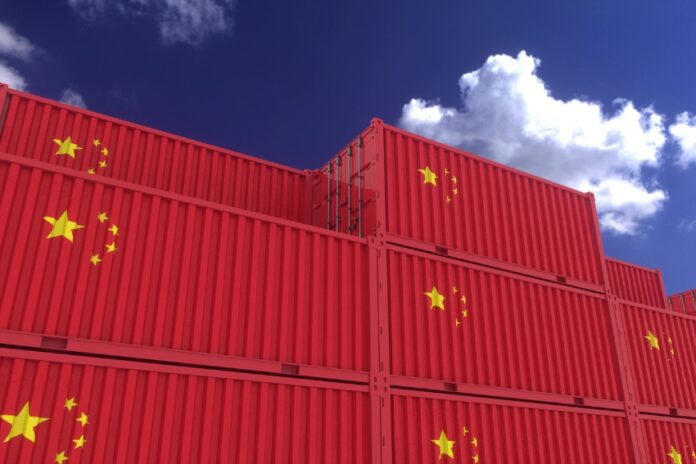Mexico was the world’s 10th largest exporter in 2024, down from 9th in 2023, according to the World Trade Organization’s (WTO) Global Trade and Statistics report.
Mexico slipped one position even though the value of its exports hit a record high last year, increasing 4.1% annually to just over US $617 billion, according to data published by Mexico’s national statistics agency INEGI in January.
The Economist: “Hong Kong’s prospects have brightened relative to its challengers’…The entrepot now looks like the only place for Chinese companies to gaze abroad and for foreigners to get a look-in on unmissable pockets of Chinese growth.”https://t.co/iDwRrfIh15
— Jonathan Cheng (@JChengWSJ) April 19, 2025
Hong Kong passed Mexico to become the ninth largest exporter in the world, but most of the Chinese special administrative region’s revenue came from “re-exports” — goods that are sent abroad after being imported without any transformation having taken place. In other words, Hong Kong is a major transshipment hub, or entrepôt, especially for goods from mainland China.
Let’s take a closer look at export data for 2024, included in the Global Trade and Statistics report, which was published this month.
Mexico the top exporter in Latin America
A table in the WTO report details the “leading exporters and importers in world merchandise trade” last year. The top 10 exporters were:
- China — the value of Chinese exports increased 6% annually to US $3.57 trillion, accounting for 14.6% of global exports.
- United States — the value of U.S. exports increased 2% annually to $2.06 trillion, accounting for 8.5% of global exports.
- Germany — the value of German exports declined 1% annually to $1.68 trillion, accounting for 6.9% of global exports.
- Netherlands — the value of Dutch exports declined 2% annually to $961 billion, accounting for 3.8% of global exports.
- Japan — the value of Japanese exports declined 1% annually to $707 billion, accounting for 2.9% of global exports.
- South Korea — the value of Korean exports increased 8% annually to $684 billion, accounting for 2.8% of global exports.
- Italy — the value of Italian exports remained steady at $674 billion, accounting for 2.8% of global exports.
- Hong Kong — the value of Hong Kong exports increased 12% annually to $646 billion, accounting for 2.6% of global exports. Almost 95% of the revenue came from re-exports, whose value increased 11% compared to 2023.
- France — the value of French exports declined 2% annually to $640 billion, accounting for 2.6% of global exports.
- Mexico — the value of Mexican exports increased 4% annually to $617 billion, accounting for 2.5% of global exports.
Mexico’s exports in 2024 were worth more than those of its USMCA partner Canada ($568 billion) and Brazil ($337 billion), the most populous country and biggest economy in Latin America.
More than 80% of Mexico’s exports go to the United States, and Mexico is the top exporter to the world’s largest economy, having dethroned China in 2023.
Given Mexico’s heavy reliance on trade with the United States, President Donald Trump’s protectionist agenda is of major concern to the Mexican government, which is currently attempting to negotiate exemptions from tariffs on Mexican steel, aluminum and vehicles.
The WTO data shows how dominant China — a manufacturing powerhouse, to put it mildly — is in global trade. Mexico’s imports from China have increased significantly in recent years, and Trump has accused the country of being a transshipment hub for Chinese exports — i.e. a backdoor to the United States. China could seek to further increase its shipments to Mexico given the high tariffs Chinese goods currently face when entering the U.S.
However, the Mexican government is currently aiming to reduce reliance on imports from China and other Asian countries as it seeks to boost domestic manufacturing output as part of its Plan México economic initiative. It has recently imposed some additional tariffs on imports from China, and could impose more as it seeks to provide greater protection for Mexican industry.
President Claudia Sheinbaum said earlier this year that imposing additional tariffs on imports from countries with which Mexico doesn’t have free trade agreements, such as China, was an option.
Mexico also the world’s 10th largest importer
WTO data also showed that Mexico was the world’s 10th largest receiver of exports last year, behind the United States, China, Germany, the United Kingdom, the Netherlands, France, Japan, Hong Kong and India.
Mexico imported goods worth more than $625 billion in 2024, according to INEGI, leaving it with a trade deficit of more than $8 billion.
By Mexico News Daily chief staff writer Peter Davies (peter.davies@mexiconewsdaily.com)
